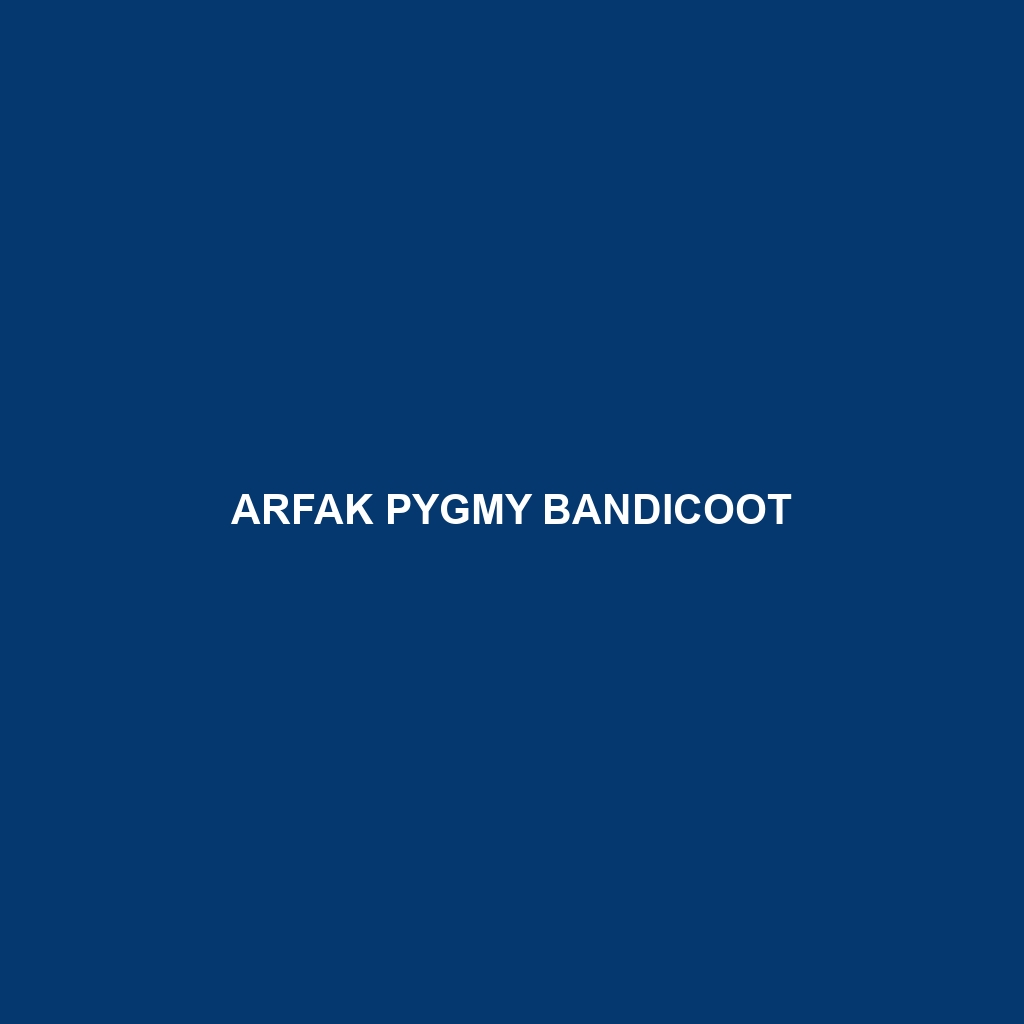Arfak Pygmy Bandicoot (Microperoryctes aplini): Detailed Description
The Arfak Pygmy Bandicoot, scientifically known as Microperoryctes aplini, is a small marsupial native to the Arfak Mountains in Papua, Indonesia. This elusive and lesser-known creature is a member of the Peramelidae family, characterized by its diminutive size and distinctive physical traits. Known for its nocturnal and secretive nature, this bandicoot plays a crucial role in its ecosystem through seed dispersal and soil aeration.
Physical Characteristics:
Size: The Arfak Pygmy Bandicoot is one of the smallest members of the bandicoot family, with an average body length of 15 to 20 centimeters (6 to 8 inches) and a tail length ranging from 10 to 15 centimeters (4 to 6 inches). They typically weigh between 100 to 150 grams (3.5 to 5.3 ounces).
Coloration: This species exhibits a dark brown to greyish-brown fur on its upper body, which helps it blend into the forest floor. Its underbelly is usually lighter, ranging from a pale grey to white. The fur is dense and soft, providing insulation against the cool mountain climate.
Special Features: The Arfak Pygmy Bandicoot has a pointed snout and long whiskers, which are essential for navigating and foraging in the dark. Its forelimbs are strong and equipped with sharp claws, making it an efficient digger. Additionally, its hind limbs are adapted for quick, agile movements through the underbrush.
Behaviors:
Social Interactions: The Arfak Pygmy Bandicoot is generally solitary, coming together only for mating purposes. They are territorial animals, with each individual maintaining a home range that they actively defend from others.
Feeding Habits: This bandicoot is an omnivore, feeding on a diet that includes insects, small invertebrates, fruits, and seeds. It uses its keen sense of smell and dexterous front paws to unearth food from the ground.
Ecological Role: As a forager, the Arfak Pygmy Bandicoot plays a vital role in its ecosystem. Its digging activities help aerate the soil, promoting plant growth, and its consumption and dispersal of seeds aid in the propagation of various plant species.
Habitats and Adaptations:
Habitat: The Arfak Pygmy Bandicoot is native to the montane and subalpine forests of the Arfak Mountains. It prefers dense, moist undergrowth where it can find ample food and cover from predators.
Adaptations: To thrive in its mountainous habitat, this bandicoot has developed several adaptations. Its thick fur provides insulation against the cooler temperatures at higher altitudes. Its nocturnal lifestyle helps it avoid daytime predators and extreme temperatures, while its strong limbs and claws facilitate efficient burrowing and foraging.
Conservation Status:
While specific data on the population of the Arfak Pygmy Bandicoot is limited, it is believed to be under threat due to habitat loss and fragmentation caused by logging and agricultural expansion. Conservation efforts are essential to protect its natural habitat and ensure the survival of this unique species.
Fun Facts:
1. The Arfak Pygmy Bandicoot is named after the Arfak Mountains, which are part of the Vogelkop Peninsula in Papua, Indonesia.
2. Despite being a marsupial, the Arfak Pygmy Bandicoot does not have a well-developed pouch like some of its relatives; instead, it has small folds of skin that protect its young.
3. This species is incredibly elusive and has been studied far less than many other bandicoots, adding an air of mystery to its existence.
By understanding and appreciating the unique attributes of the Arfak Pygmy Bandicoot, we can better appreciate the biodiversity of our planet and the importance of conservation efforts to protect such fascinating creatures.
